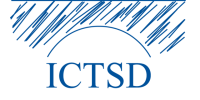
The EU’s trade-distorting domestic farm subsidies were lower in the 2010-11 marketing year than in any previous year, according to new figures that the 28-member bloc has reported to the WTO.
Domestic support payments that are classed as distorting trade fell to €11 billion, the EU says - one-sixth of the level they were at a decade ago, before the European Commission introduced successive reforms aimed at “decoupling” farm subsidies from farmers’ production decisions.
However, the new figures show that a record €68 billion was also spent on “green box” payments that ostensibly cause no more than minimal trade distortion, and are therefore exempt from any ceiling or reduction commitments under current WTO rules.
Decoupled income support payments accounted for just under half of this amount. Brussels has made these payments the centrepiece of its Common Agricultural Policy since its reforms in 2003.
Although more recent figures have yet to be reported to the global trade body, the latest reform of the bloc’s Common Agricultural Policy does not substantially modify farm subsidy trends.
Decoupled income support payments are likely to continue to make up the bulk of EU subsidy payments to farmers. However, under the new CAP these will be made conditional on the fulfilment of new environmental requirements such as crop diversification, maintaining permanent grassland, and safeguarding certain ecological features.
The latest reforms would also allow member states to increase the share of farm support that is allocated to “coupled” farm payments, albeit within certain limits - potentially opening the door to an increase in this type of support in years ahead. (See Bridges Weekly, 27 June 2013)
Farm subsidy breakdown
The €11 billion in trade-distorting support is composed of elements that are treated differently under current WTO rules.
The most trade-distorting types of payments - known as “amber box” subsidies - represented €6.5 billion of domestic subsidies in the 2010-11 marketing year, the new figures show. This includes support that is directly linked to production levels, such as input or output subsidies.
The EU also reported €1.4 billion in “de minimis” payments - equally trade-distorting support that Brussels is allowed to provide on condition that it does not exceed 5 percent of the value of production.
Amber box subsidies are subject to a €72 billion ceiling under WTO rules - far higher than recent spending.
The bloc also provided €3.1 billion in “blue box” payments - production-limiting farm subsidy payments which are exempt from any current ceiling, even though they do distort trade.
A separate subsidy notification from the EU also corrected previous figures for the 2009-10 marketing year. Total amber box payments for that year were actually €10.8 billion, Brussels reported, and not €8.8 billion as previously reported. (See Bridges Weekly, 28 November 2012)
€2.1 billion of trade-distorting support payments for barley, which had been omitted from the original report, appeared to be the source of the discrepancy.
WTO members return to “core issues”
The WTO’s Doha talks would have created a new ceiling on “overall trade-distorting support,” made up of the sum of amber, blue and de minimis payments. A draft text circulated in 2008 would have set this at €22.1 billion for the EU, and at US$14.5 billion for the US.
In December last year, trade ministers agreed to revisit the long-stalled Doha agenda at the WTO’s ninth ministerial conference, held on the island of Bali in Indonesia.
Trade negotiators in Geneva are currently exploring how best to do so. Agricultural domestic support is seen as one of the “core” negotiating issues which members will eventually have to engage with if they are to conclude the troubled talks.
Read more articles from the latest edition of Bridges Weekly

